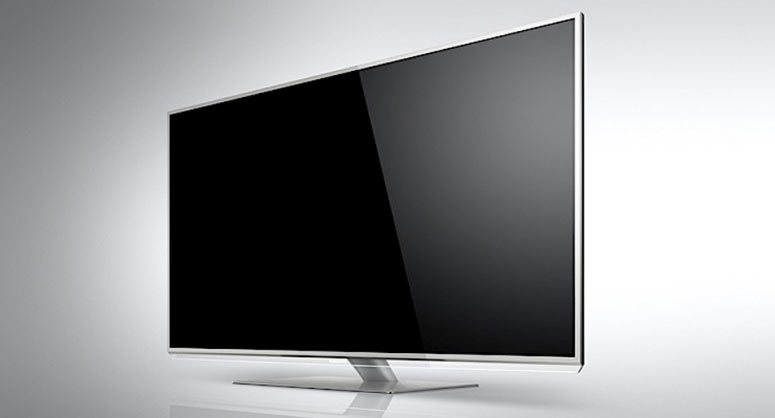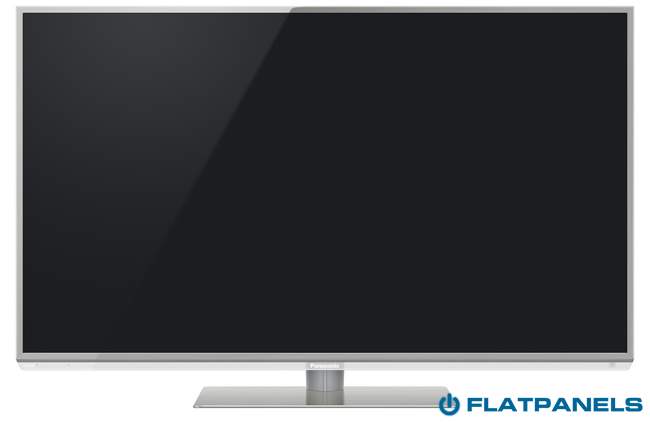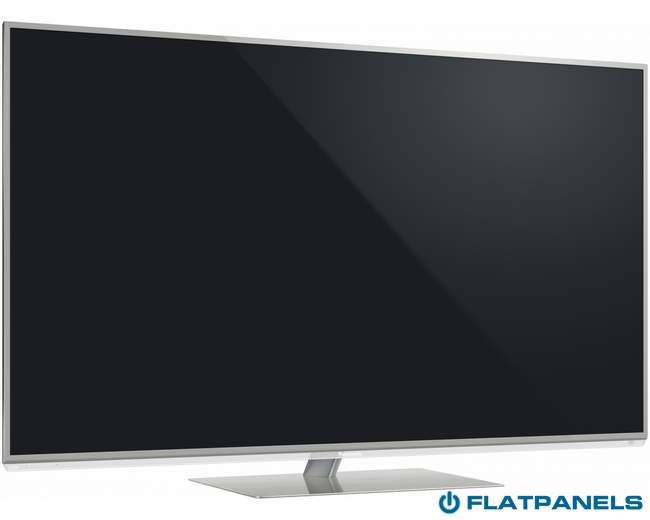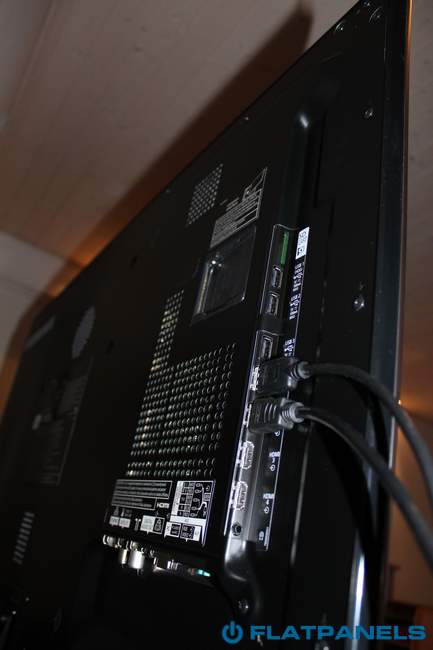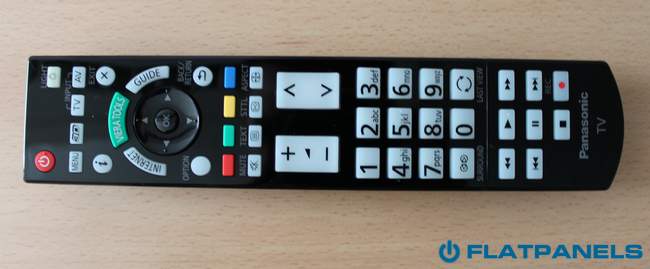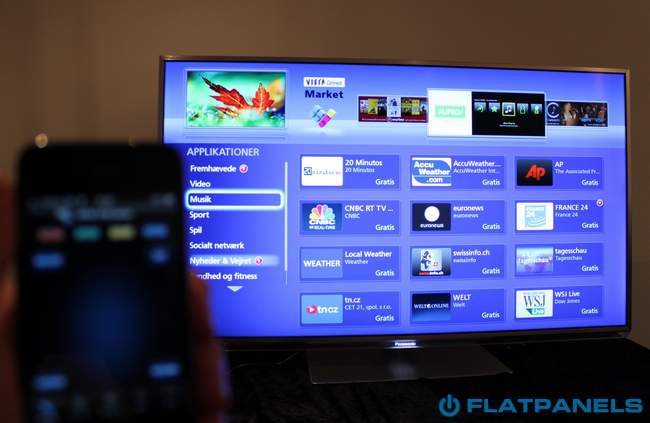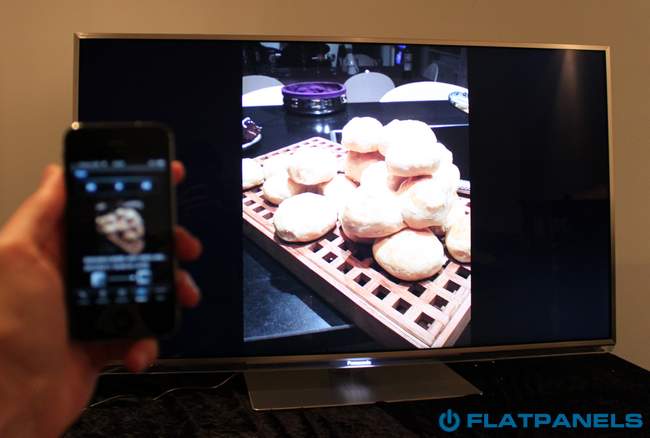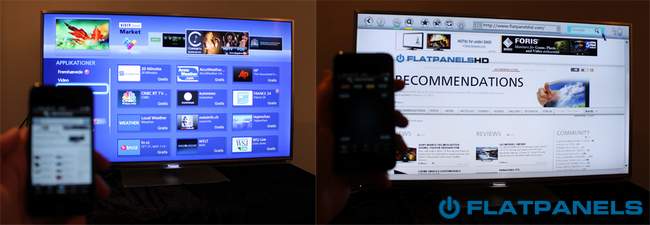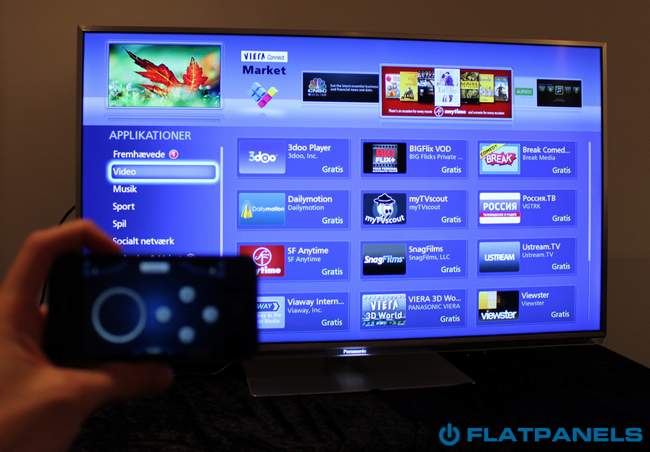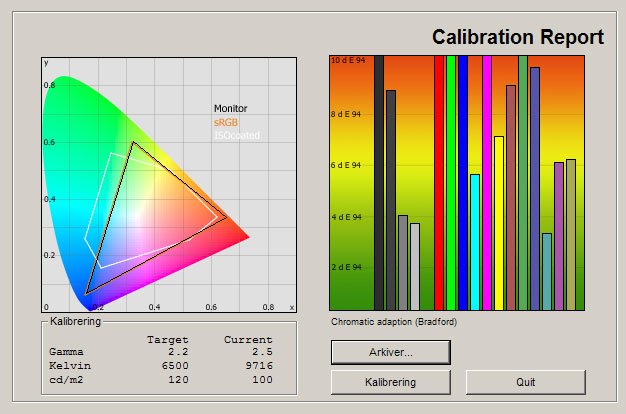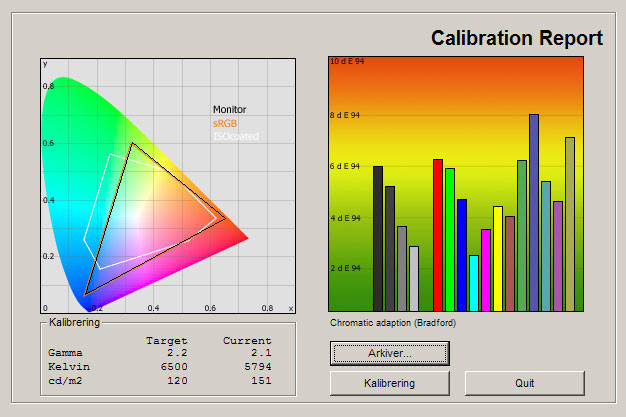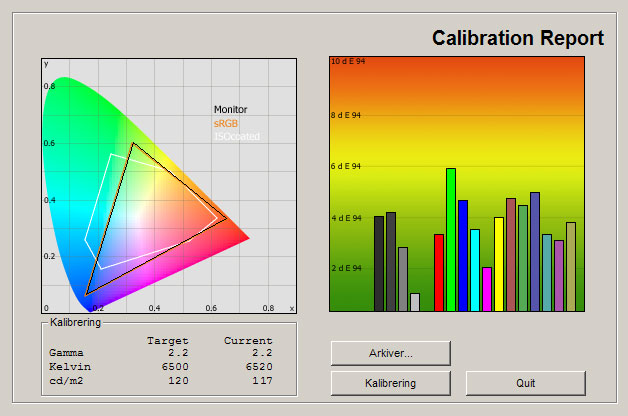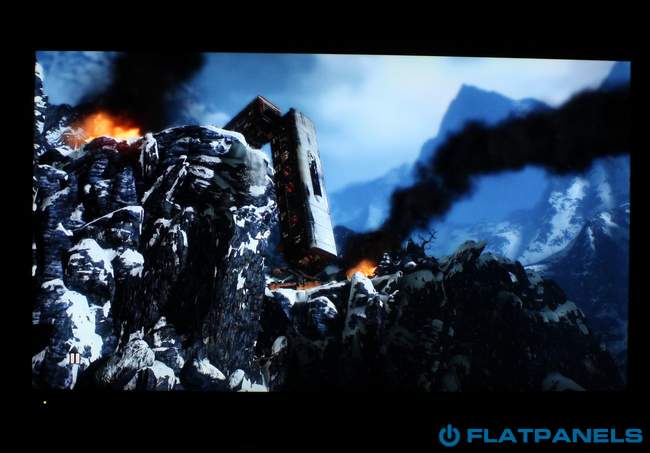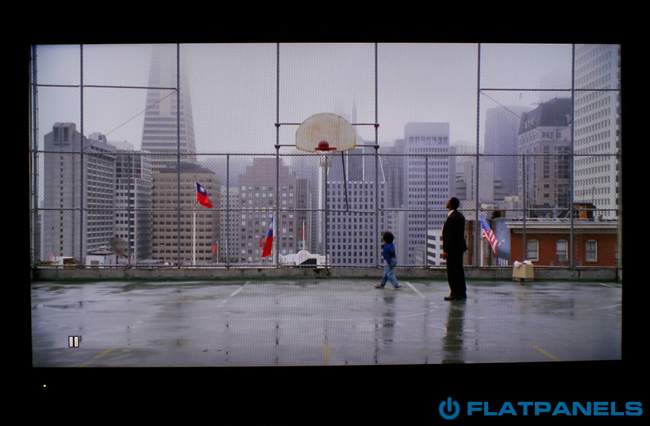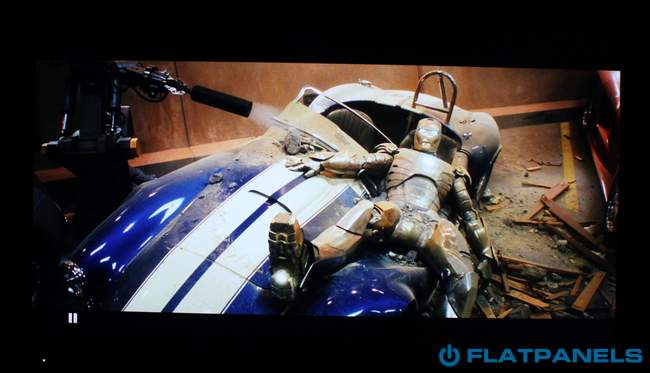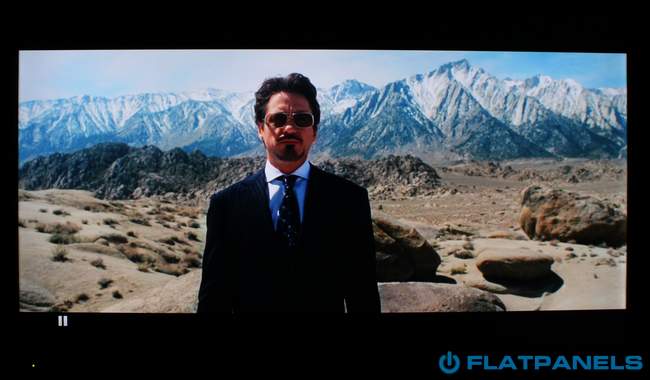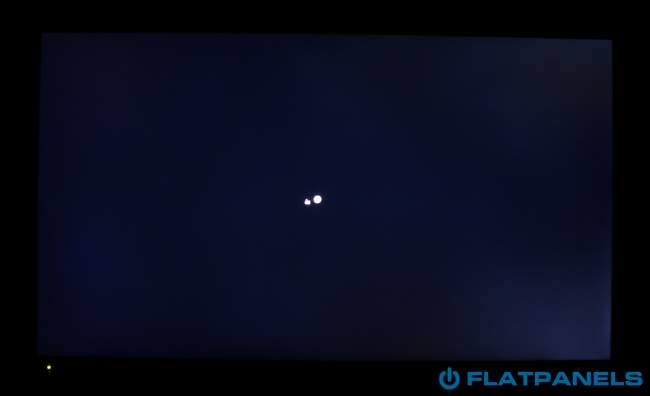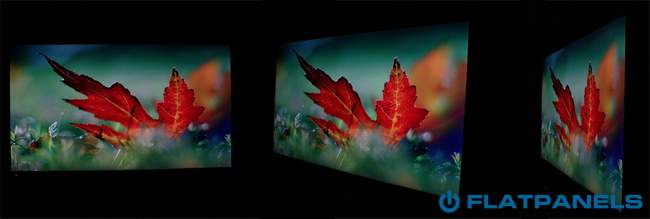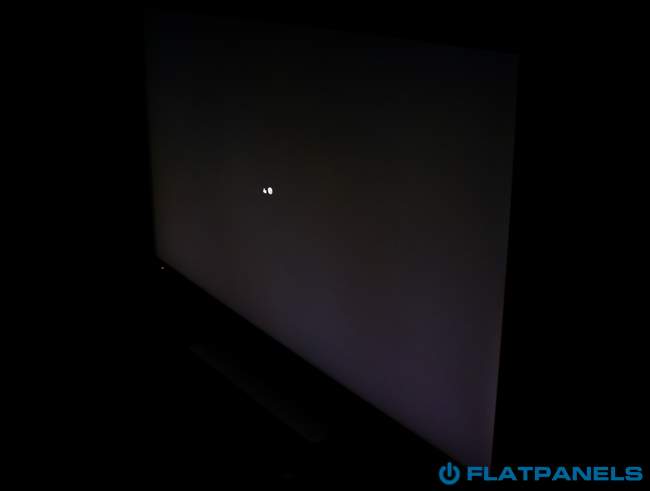Review: Panasonic DT50
TABLE OF CONTENTS Specs - Our first impressions - Test tools - Functionality - Power consumption - Calibration - Picture quality - 3D picture quality - PC & Media Center - Viewing angles - Sound - Conclusion - Debate Panasonic DT50 review
DT50 is part of Panasonic’s new 2012 LED line-up. With its sleek design and ultra slim frame, Panasonic hopes to challenge the South Korean TV makers and their LED models. DT50 lacks the dual-core processor found in the flagship WT50 but besides that the TV packs Panasonic’s most advanced picture systems, the Smart Viera platform and active 3D.
But how good is Panasonic’s first large-size high-end LED model? Is DT50 a true contender to LG, Samsung and Sony’s most competitive models in this price range? And can Panasonic transfer their expertise from their successful plasma TVs to their new LED line-up? FlatpanelsHD will find out.
Panasonic DT50 will be available in the US in 47 and 55 inches called TC-L47DT50 and TC-L55DT50, and in Europe in 42, 47 and 55 inches called TX-L42DT50, TX-L50DT50, and TX-L55DT50.
Subscribe to our Newsletter, RSS feed or twitter to receive notice when new reviews are online.
Size: 47" widescreen Resolution: 1920x1080 Response time: - Contrast ratio: - Brightness: - Viewing angles (H/V): 178/178 Panel type: IPS panel with edge LED Wall mounting: Swivel stand: Dimensions (HxWxD): 63.1cm x 106.7cm x 2.7cm (without stand) Weight 13.0 kg Built-in speakers: Inputs VGA DVI (but possible to convert through HDMI)
Audio (type) (Audio in/out)
S-video Composite Component HDMI (4 inputs, 1 HDMI 1.4)
Outputs Audio (type) (1 output, headphones)
S/PDIF (optical)
Price and retailer:
| US retailer | UK retailer |
 |
Our first impressions
Panasonic DT50 is a very elegant TV and is unlike anything we have seen from Panasonic in the past. The aluminum bezel is very thin and the TV is only a few centimeters in depth. At the bottom of the frame, Panasonic has placed a transparent plastic bar that also shows a Panasonic logo in the center. It looks great.The base is made from metal. It feels – and looks - very exclusive, and also allows users to rotate the TV from side to side.
All input connectors point either down or to the side, which is convenient if you want to put the TV on a wall.
Test tools
Our TV signal is DVB-S (satellite) from Canal Digital and DVB-T (terrestrial). We also have an analogue TV connection. Testing is done with the DVE (digital video essentials) and Peter Finzel test DVD. Testing is also done with DVD, TV, Blu-Ray and Media center/PC.We use our own monitorTest. The software supports some of the traditional test patterns used to evaluate displays as well as some new and unique test patterns developed by the people here on FlatpanelsHD.
Sony PlayStation 3 is our Blu-Ray player.
All contrast measurements are based on the ANSI methodology.
Functionality
TV manufacturers seem to have neglected the importance of remote controls for many years and Panasonic has left their remote control largely unchanged. It is basically the same remote control that has been around for many years just with a new glossy surface. In my opinion it is not a very well-crafted piece, and the plastic casing feels cheap. The buttons are large, which is a god thing but the arrangement of buttons is pretty confusing, mostly because it has too many.Panasonic DT50 has the same Smart Viera platform found in the cheaper ET5 range that we examined a few weeks ago. Panasonic has made a few improvements compared to the 2011 line-up but the platform looks almost identical. The app store is constantly evolving but unfortunately at slow pace. Too few interesting apps are available, especially in Europe.
Panasonic has chosen not to include the dual-core processor in DT50, which means that Panasonic DT50 basically offers the same functionality as the cheaper ET5 model. I therefore suggest that you read the Functionality section from the ET5 review for more information about Smart Viera, USB recording, and DLNA.
I have one thing to add, though. Panasonic has just released a new Viera Remote app for Android and iOS shortly – and we have had a pre-release version for some time to test our the functionality. It is an interesting app that will add new functionality and tighter integration with your smartphone and tablet.
It allows users to:
The functionality works pretty well. You can always swipe - for example - images or video from your smartphone onto the TV; no matter what you are watching on the TV. The same is true for webpages. And it works seamlessly. Just swipe up with your finger and wait.
The major downside, however, is that you have to access these things through the Viera Remote app. If you pull up your typical image gallery or browse to a website on your smartphone/tablet through the standard browser, the “swiping” functionality is not possible. You need to be inside the Viera app. This is clearly a limitation due to the fact that Panasonic has no direct control over either the iOS or Android operating systems. The app also seems to integrate all photos and videos, but without the folder structures, which means that my 600-700 photos on my smartphone show up from start to end in an endless scrolling screen.
The function to allow “pulling” of TV channels from the TV onto a smart device is not active on DT50 due to the lack of a dual core processor. We will examine this function in one of our GT50 or VT50 plasma reviews later.
Below you see the Game remote functionality inside the app.
The app’s remote control functionality is fair but still not what we had hoped for. Instead of rethinking the remote principle, Panasonic has basically just moved all the buttons found on the standard remote onto the smartphone screen. A nice touch would have been an integrated EPG on the tablet/smartphone screen.
Download the app for Apple iOS and Google Android.
Energy consumption
| Compare power consumption measurements on different TVs and monitors with our interactive power consumption applet here. |
 |  | |
| Standby | 0.0 W | 0.0 W |
| SD+HD | 63 W | 59 W |
| 3D | 77 W | 77 W |
After calibration I measured power consumption to 59 W, which is comparable to most newer edge LED based TVs today.
Calibration on Panasonic DT50
Below you can see an out-of-box measurement on Panasonic DT50 in the Standard picture preset without Eco mode.| The graph says this: The number on the left is the delta value. Delta is a difference between two factors; here it’s the difference between the measured color on the panel and the actual color that is our target. |
The out-of-box picture settings are horrible. As evidenced in the graph above, color deviations are extreme due to a wrong gamma curve. The color temperature was measured to 9716 Kelvin, which is far to high, making picture appear bluish/cold.
The setting option called “Vivid Colors” is activated by default but sometimes it actually does the opposite of what the name implies. We found that it sometimes makes colors – for example yellow and pastel colors – appear dull and “feeble”. Other times it makes picture appear more vivid - although wrong – but this dynamic color function is one of the reasons that the out-of-box settings are just horrible.
I quickly moved on to the Movie profile and took a new measurement.
The movie preset is much better but still not what we are used to from Panasonic’s plasma TVs. Pictures are slightly red-tinted due to the too low color temperature and the gamma curve was still not keeping to the 2.2 specification, and therefore some color deviations were present (seen the graph to the right). Pictures also looked a bit green-tinted.
The brightness level is slightly too high but this is easily adjusted – and remember that we have turned off the automatic brightness adjustment sensor (Eco mode).
I now did a calibration on Panasonic DT50. Here is my result.
After calibration we managed to get a pleasing result but DT50 insists on pushing the brightest colors to be slightly too bright. It is not a major issue but it happens because Panasonic does not allow us to achieve an accurate 2.2 gamma curve. We experienced the same thing with the ET5 model.
Below are my calibrated settings.
 | |
| Viewing mode: | Professional1 |
| Contrast | 32 |
| Brightness | -1 |
| Colour: | 30 |
| Sharpness: | 3 |
| Eco | On/Off |
| Vivid color | Off |
| P-NR | Off |
| Intelligent Frame Creation | Off |
| Gamma | 2.2 |
| 16:9 Overscan | Off |
| R-Gain | 2 |
| G-Gain | -4 |
| B-Gain | 4 |
| R-Cutoff | 0 |
| G-Cutoff | -1 |
| B-Cutoff | 1 |
Note: Some setting options are not active before you enable ISFccc in the Setup menu. The Eco option is set to On/Off in the table because it depends on your preferences. Eco is the automatic brightness adjuster that adjusts brightness according to the surroundings. It is a practical setting if you watch TV during both daytime and nighttime but if you have a home cinema with controlled lighting, I suggest that you leave it off.
Picture quality on Panasonic DT50
| In this section I go through picture quality with the calibrated settings. |
Panasonic DT50 uses a glossy coating on the panel, which serves one primary purpose. It has been designed to enhance the perception of black levels during daytime, and it works pretty well. Pictures on DT50 look vivid and intense in a brightly lit room. However, the coating also introduces some reflections, especially in the dark areas of the pictures, so it is a win-some-lose-some situation. The coating is not much different from the one Samsung has been using for a few years on their LED models.
Color accuracy was examined in the calibration section and here we examine the practical color gradation using color gradients. Ideally, a TV should be able to reproduce every color step in the color gradient tests. Panasonic DT50 had some problems with the dark and semi-dark color shades. Our gradients revealed some “bands”, which means that not all colors are distinguished perfectly. We have seen better color performance from IPS based LCD-TVs but the result was acceptable.
Panasonic has a lot of expertise in the TV area and even though they only recently started to compete in the large-size LCD/LED market, we can clearly tell that their picture processing systems are solid. DT50 delivers solid SD picture quality with a high level of detailing and good motion reproduction. The glossy coating adds vividness to pictures but we noticed some weakness in the dark areas when watching TV in the evening.
One thing we noticed was how Panasonic had eliminated the “smudging” issues that we complained about on last year’s DT30 model. DT30 had a tendency to smudge out details in some movie scenes; often visible in human faces. DT50 has no such problems. But one problem that remains is the color performance. As noted last year (and in the calibration section of this review), Panasonic has chosen to move down the same road as most other LCD-TV manufacturers. Instead of focusing on accurate color reproduction and correct pictures – as on their plasma TVs – Panasonic has decided to focus on vivid “wow” colors. This is a shame. No harm done if Panasonic had included a THX or a Cinema picture profile that presented the choice to users, but even the True Cinema profile is not very impressive. We know that many users prefer this kind of color performance but in the end it makes Panasonic’s LED models blend into the crowd. It makes them look more like the competitor’s LED models than their own plasma TVs.
HD performance is quite good, too. Detailing is high and we noticed that even moving images manage to go through without much loss of detail. Both HD movies and HD games looked impressive, and even though we had preferred more accurate colors, I must say that Panasonic has moved forward in the LCD area to better compete with their rivals.
I went on to examine response time more closely on the panel and ran it through our stress tests, as well as some gaming. I noticed a low level of blurring, and no significant overdrive trailing (halos around moving objects) either. DT50 is a very fast LCD-TV, and although not as fast as plasma TVs, it is on par with the best performing edge LED based LCD-TVs when it comes to motion reproduction.
Input lag was measured to 28-32 ms.
Below I have measured black level and contrast.
 |  | |
| Black level | 0.17 cd/m2 | 0.15 cd/m2 |
| Brightness | 151 cd/m2 | 117 cd/m2 |
| Contrast ratio | 888:1 | 780:1 |
Contrast ratio +/- 50
After calibration measured black level to 0,15 cd/m2, which is not unusual on a TV with IPS panel but still worse that the best performing TVs in the IPS class, such as LG LM7600. On the other hand, it is definitely an improvement over last year’s DT30 model from Panasonic. Compared to LCD-TVs with VA panels, such as those from Samsung and Sharp, IPS panels continue to show significant weakness in this area.
Shadow detailing is fairly good after calibration. Only the 2-3 darkest shades of grey are hard to distinguish from black. This is due to the minor inaccuracies in the gamma curve that we addressed in the calibration section.
Below I have examined the Panasonic DT50 a completely dark room to see if it has clouding, backlight bleeding or floating black issues.
Our DT50 sample had mild clouding in the bottom right corner but nothing we haven’t seen on edge LED based LCD-TVs before. It was visible in a completely dark room but during daytime we rarely noticed it.
3D picture quality on Panasonic DT50
| We used the PlayStation 3 and a 3D Blu-ray player to test 3D movies and 3D games. In this test I want to examine 3D depth, 3D picture quality, 3D crosstalk and finally include a small comparison to some of the other 3DTVs on the market. |
Panasonic has some of the best performing active 3D plasma TVs on the market and they also recently introduced their first passive 3DTVs with the ET5. DT50, on the other hand, is an active 3D LCD-TV that requires expensive shutter 3D glasses. And in most countries, 3D glasses cost extra.
Last year we reviewed DT30, the predecessor to this DT50, and we told you that Panasonic had managed to reduce crosstalk to a fairly low level. The same is true for DT50. DT50 is not crosstalk-free but it is one of the better active 3D LED models on the market. On the other hand, I do not see a big improvement over last year’s DT30 TV. If you mostly use 3D for gaming, you will notice crosstalk in some games for example.
The brightness level is high enough to compensate for the loss in brightness caused by the 3D glasses but I still find the active 3D glasses very uncomfortable – especially during daytime. During daytime flicker is often introduced.
To sum up, my conclusion about 3D is still unchanged. I still believe that passive 3D is the best – and most convenient - solution on a LCD/LED TV and that active 3D should be exclusive for plasma TVs due to their faster response time, and thus lower crosstalk levels. DT50 is not bad be any means but it lacks the ease and convenience introduced by the passive 3D solutions, such as the one in the cheaper Panasonic ET5.
PC and Media Center
In order to achieve 1:1 pixel mapping you need to select the aspect ratio called “16:9" in the TV settings.Viewing angles
The viewing angles are fairly wide just like on most IPS based TVs. You might notice some light color wash-out from extreme angles but for this is not really a problem on DT50. It looks fairly good from pretty much any angle.However, it still struggles with contrast angles like all other IPS based LCD-TVs. See below.
Sound quality
We never expect much from these thin LED models when it comes to speaker quality but we heard a demo of the speakers inside DT50 back in February 2012, and they were actually surprisingly good – and now we are able to confirm this in our own environments. Sure, the speakers are not great in any way, but compared to the typical thin modern TV, Panasonic had taken sound quality a few steps up. The bass and mid tones are more intense, thus addressing the major weak point of most slim TVs. I think you will be pleasantly surprised, too.However, for movies, games and music we still recommend separate speakers.
Conclusion
Panasonic’s Smart Viera platform remains largely unchanged compared to last year’s models but Panasonic expands the offerings with the new Viera Remote app for smartphones and tablets. Full functionality is only available when paired with Panasonic’s dual-core TVs but DT50 can utilize the push function that allow users to swipe video, music, pictures and webpages from a smartphone/tablet onto the TV. It works but as you can imagine you need to be inside the app, which is not very convenient when browsing for example webpages – but Panasonic certainly tightens integration between devices through this app.When it comes to picture quality, DT50 could be mistaken for one of the Korean competitor’s TVs. DT50 feels more like a “LED” model than a Panasonic plasma TV. We do not expect the same kind of picture performance but we had hoped to see the same dedication to picture quality and color accuracy that Panasonic puts into their plasma TVs. Some might call it “welcomed diversification”; others “an unfocused TV strategy”. Take your pick. With this premise, DT50 performs fairly well but fails to really set itself apart from the LED competition with its oversaturated (undersaturated at times) colors and subpar black levels. On the other hand, DT50 has fast response time, wide viewing angles, low crosstalk for an active 3D LCD-TV and high detailing in both SD and HD content.
To summarize, Panasonic DT50 has the characteristics of a modern “LED TV”. It has its strengths compared to Panasonic’s plasma TVs but we still prefer Panasonic’s plasma TVs from a picture quality point-of-view. The new media functions provided by the updated Viera Remote app for iOS and Android adds to the “Smart TV” part but we still hope to see even tighter integration and better apps before we can truly embrace Panasonic’s Smart TV platform.
Price and retailer:
| US retailer | UK retailer |
 |
 |  |  |
| High detailing in SD and HD | Out-of-box settings | Living room |
| Fast response time for a LCD-TV | Black depth and some clouding | Home Cinema |
| Elegant design & choice of materials | Color inaccuracy | |
| New Viera Remote app features | App selection | |
| Speakers better than expected |
Subscribe to our Newsletter to receive e-mails when new reviews are online.

